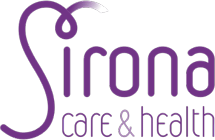Self-harm Matters HIT
Supporting access to services for those who self-harm, increasing awareness of some of the underlying reasons that can cause self-harm and reducing presentation to A&E departments.
News related to this Health Integration Team
Procedures for moderating self-harm and suicide content online are inadequate, study finds
Online platforms need to improve the ways they moderate self-harm and suicide content, to keep…
Suicide rates lower for almost all ethnic minority groups living in England and Wales
Suicide rates among almost all ethnic minority groups living in England and Wales are lower…
Self-harm Matters HIT 2023-24
Making links across public health in the region The HIT expanded its membership this year,…
Understanding the journey of self-harm in Bristol, North Somerset and South Gloucestershire
The Self-Harm Matters Health Integration Team contributed to a technical briefing around self-harm produced…
Developing suicide prevention tools for young people
Suicide prevention tools for young people should be customizable, transparent, accessible and visually appealing, according…
Should we talk to young people about social media during mental health consultations?
Young people find the idea of talking about their online experiences during a mental health…






